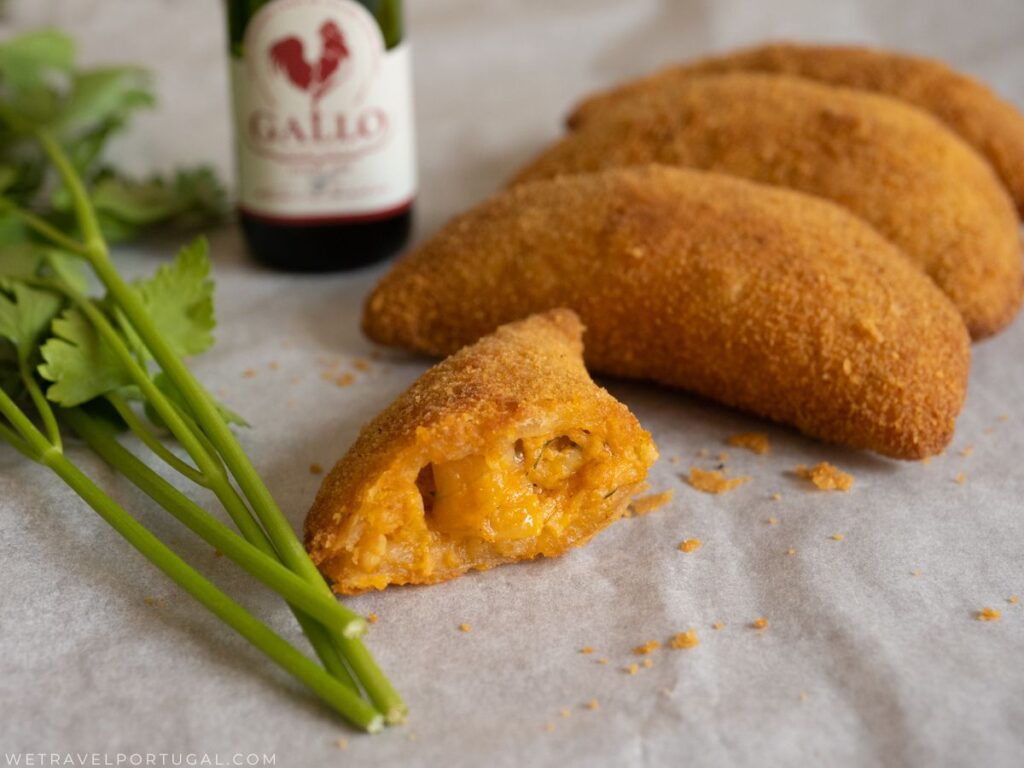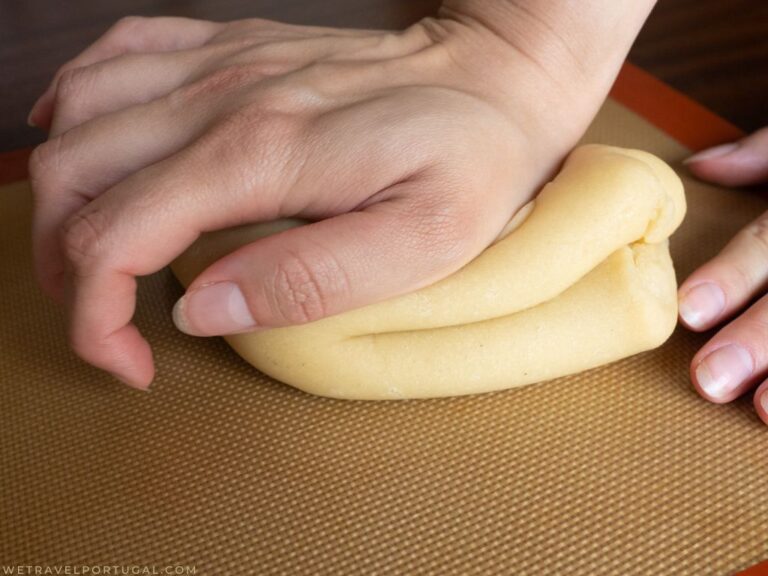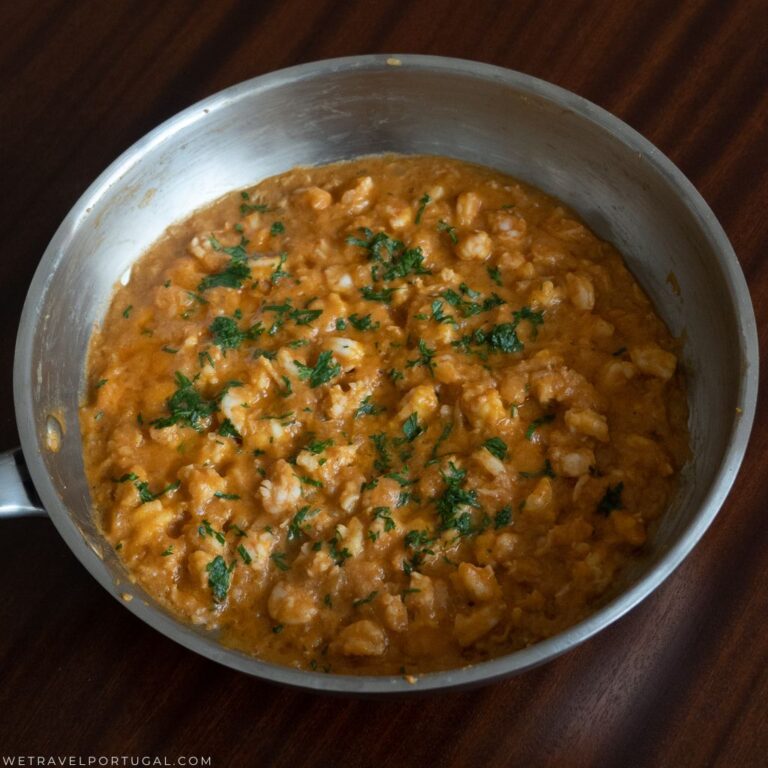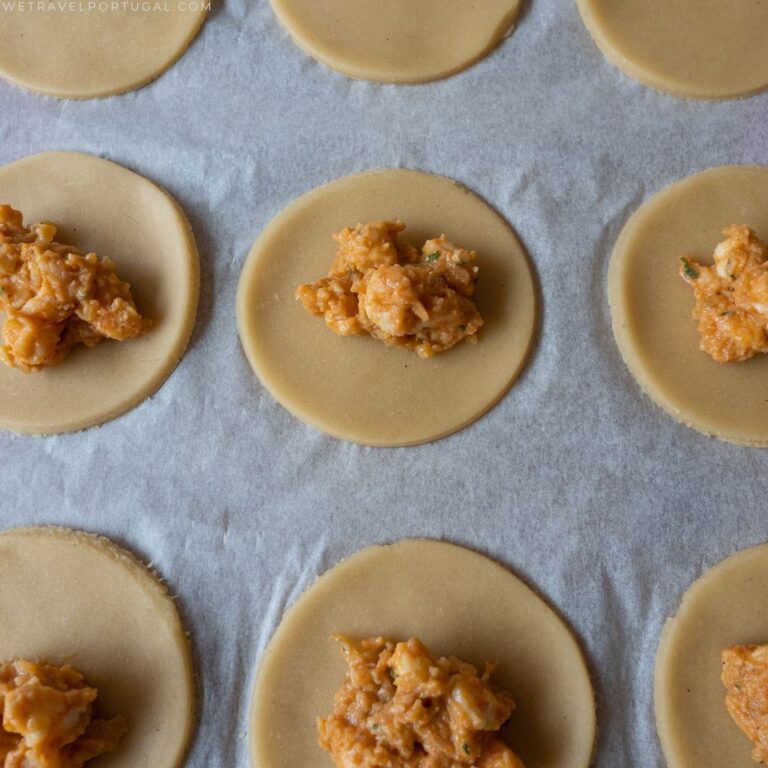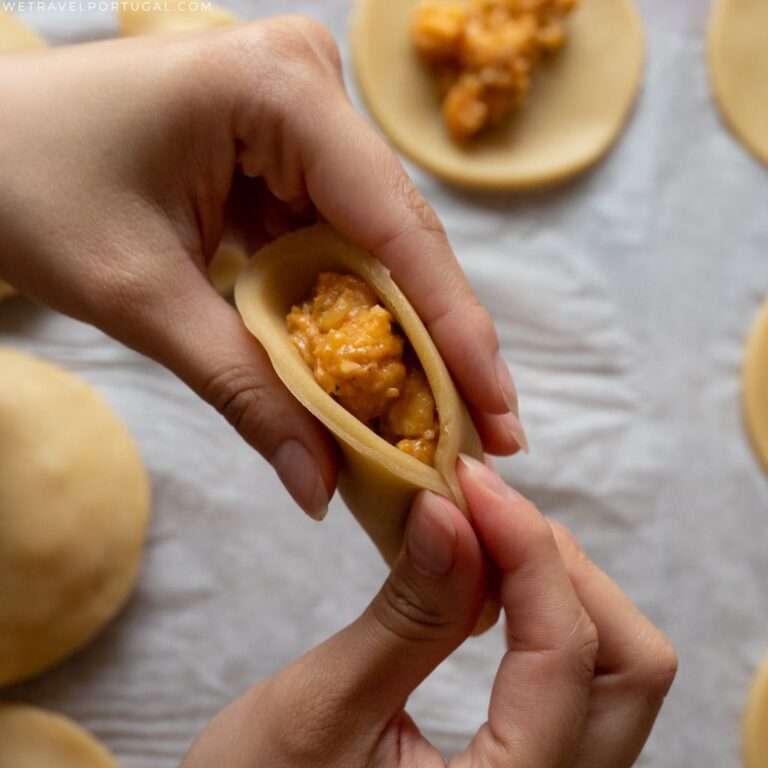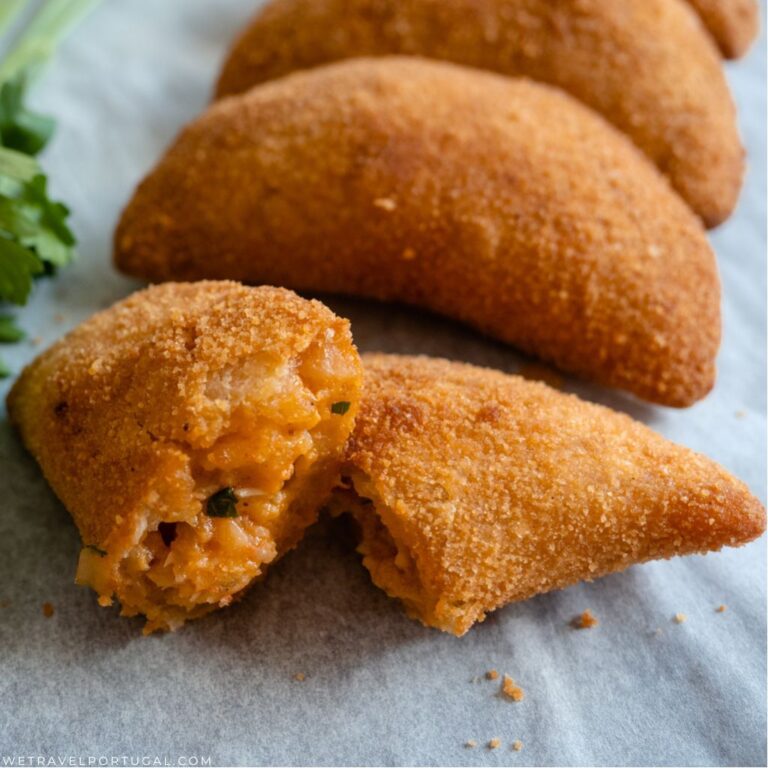Rissois are a delicious type of fried pastry from Portugal. They come in many types but my favourite is Rissóis de Camarão. Rissois that are stuffed with a creamy shrimp filling, which is wrapped in a light dough and then fried.
If you visited Portugal, you’ve probably noticed these golden-brown half-moon shaped pastries displayed in supermarkets and traditional cafés. They are called rissóis and they are deep-fried pastries usually filled with shrimp or mincemeat. They are the perfect pairing to an imperial and are usually eaten on their own as a snack, or as main course with tomato rice and salad.
Rissole, Rissóis or Risoles?
When applied internationally, the word rissole can mean many different things. When searching for it it’s likely you’ll get results pointing to beef patties, potatoes, desserts, and sometimes something resembling the Portuguese pastry we discussed earlier.
For the French, rissoles are usually small, sweet pastries filled with a compote made of pears and spices. For the British, a rissole usually refers to a patty made of leftover meat from a Sunday roast. In Australia and New Zealand, a rissole is similar to a meatball, usually made from beef, chicken or lamb. For the Indonesian, a rissole is a snack made of crepe dough, filled with chicken, egg, and varied veg, combined with bechamel sauce. Similar to the Portuguese rissóis, the dough is rolled in breadcrumbs and deep fried.
Rissóis and risoles on the other hand, are both Portuguese words from Portugal and Brazil respectively. And although they mean pretty much the same thing, there can be some differences when it comes to what goes inside the pastry. In Portugal, shrimp, and beef are the traditional fillings. In Brazil you can find a greater variety of risoles made with cheese, shrimp, palm heart, and beef. In Brazil they are smaller and not usually served with rice, as they are classically a birthday party snack. Today we focus on Portuguese Rissóis!

About Our Rissóis Recipe
Rissóis de Camarão consists of a dough made with flour and stock, and a creamy shrimp filling. You can have both components ready to go beforehand and leave the shaping and frying for the day you will eat them. Or you can also finish them in advance, and store in the fridge for a day or two until frying. We prefer making the filling the day before since it needs a couple of hours to cool off and set.
The next day we prepare the dough, shape, coat them in breadcrumbs and then fry. Either way, this recipe is really simple, and it doesn’t require a lot of ingredients, just a bit of patience, since they are shaped by hand, one by one. There are ways to make the shaping part quicker, but we prefer doing it the traditional way as my grandmother does!
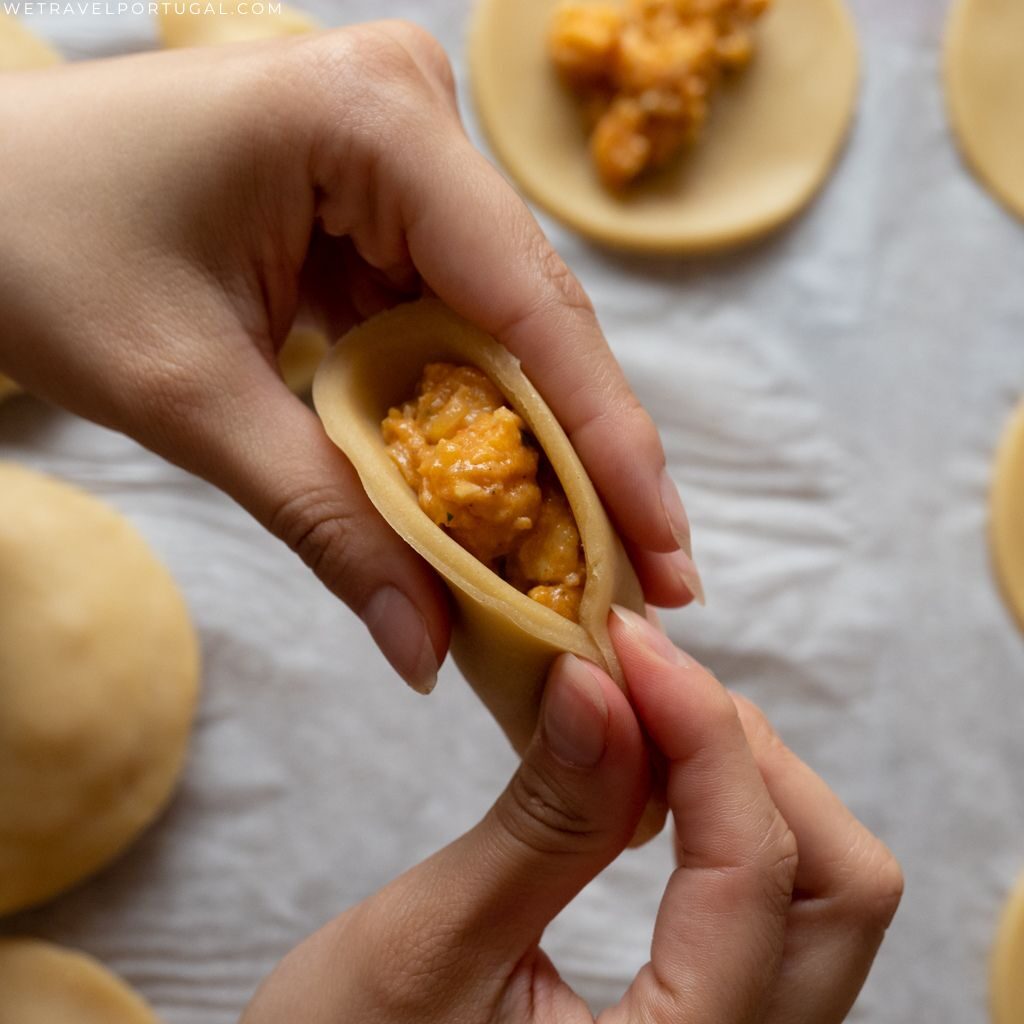
Shrimp Rissois Filling
When it comes to the filling, we prefer using fresh prawns as their skin can be used to make the stock that goes in the dough. Fresh prawns can be replaced by frozen or precooked, and you can use chicken or vegetable stock cubes. It’s really up to you and the time you have available.
These snacks are simply delicious, and we guarantee you will be surprised with the results! There are best eaten while still warm, and the perfect snack or starter! And for the optimum Portuguese experience, they can be served with piri piri sauce and a glass of cold beer!

Rissóis de Camarão – How to Make Portuguese Prawn Rissoles
This recipes yields around 15 individual pasties!
We hope you enjoy this recipe! Have you tried it? Let us know in the comments!

